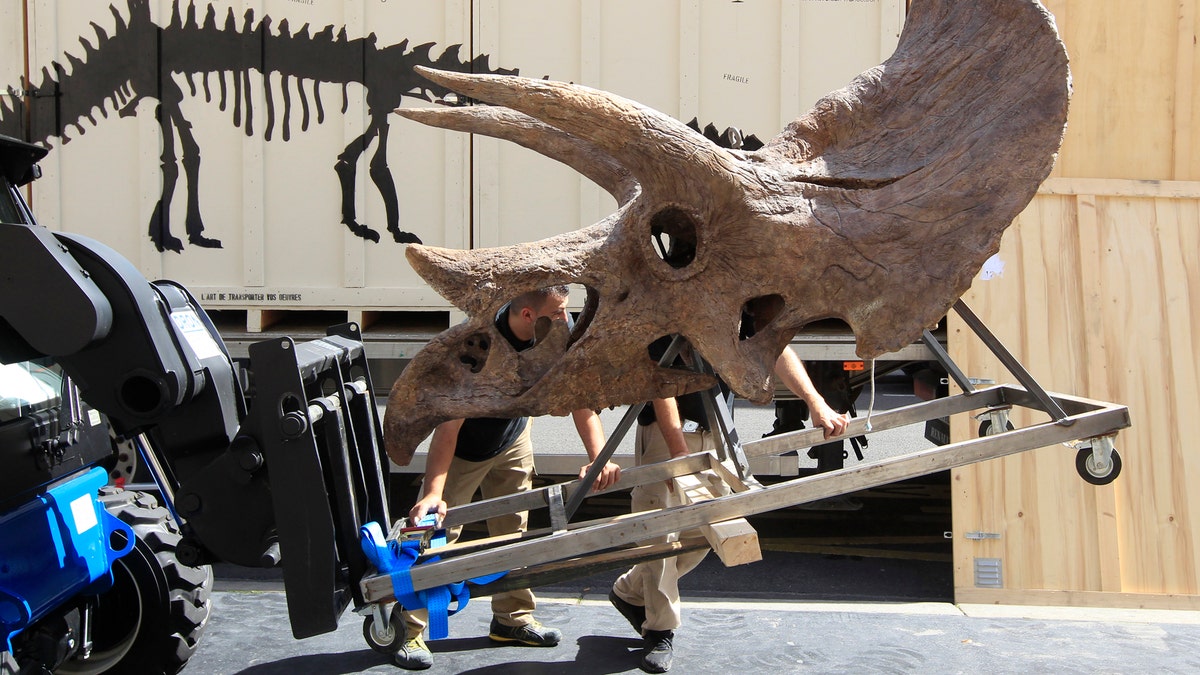
File photo: Workmen move the skull of a Triceratops which will be presented to the public in Paris June 27, 2011. The dinosaur skeletons will be presented to the public from July 1 through September 15. (REUTERS/Jacky Naegelen)
Archaeologists have found the remains of a dinosaur that could reshape our understanding of the natural history of planet Earth.
The “triceratops-style” beast was discovered after its tooth was dug out of rock in Missippipi.
The ceratopsid dinosaur is believed to have roamed across North America between 66 and 68 million years ago.
Until now, scientists believed ancient North America was entirely split by an enormous sea.
But the discovery of the horned dinosaur has suggested there was a bridge between the two sides of America.
“The fossil is small, only the size of a quarter, but it packs a tonne of information,” said Andrew Farke, a palaeontologist at the Raymond M. Alf Museum of Paleontology.
“The shape of this tooth, with its distinctive split root, is absolutely unique among dinosaurs.”
“We only have the one fossil, but it’s more than enough to show that an animal very similar to triceratops – perhaps even triceratops itself – made it into eastern North America.”
Until now horned dinosaurs, or ceratopsids, have only been found in western North America and Asia.
A huge body of water that linked the Arctic Ocean and the Gulf of Mexico split the continent into eastern and western halves, meaning lifeforms evolved totally differently.
Scientists have been unable to find out when this “seaway” disappeared.
Now the discovery has suggested the sea may have closed, at least in places, when Triceratops and Tyrannosaurus rex walked the Earth and before the extinction of the dinosaurs 66 million years ago.
“The discovery is shocking because [until now] fossils of ceratopsid horned dinosaurs had never been discovered from eastern North America. It’s certainly the most unique and important vertebrate fossil discovery I’ve ever made,” said George Phillips, palaeontology curator at the Mississippi Department of Wildlife, Fisheries, and Parks’ Museum of Natural Science.
Archaeologists recently dug up a gigantic flying killer dinosaur as big as an aeroplane.
